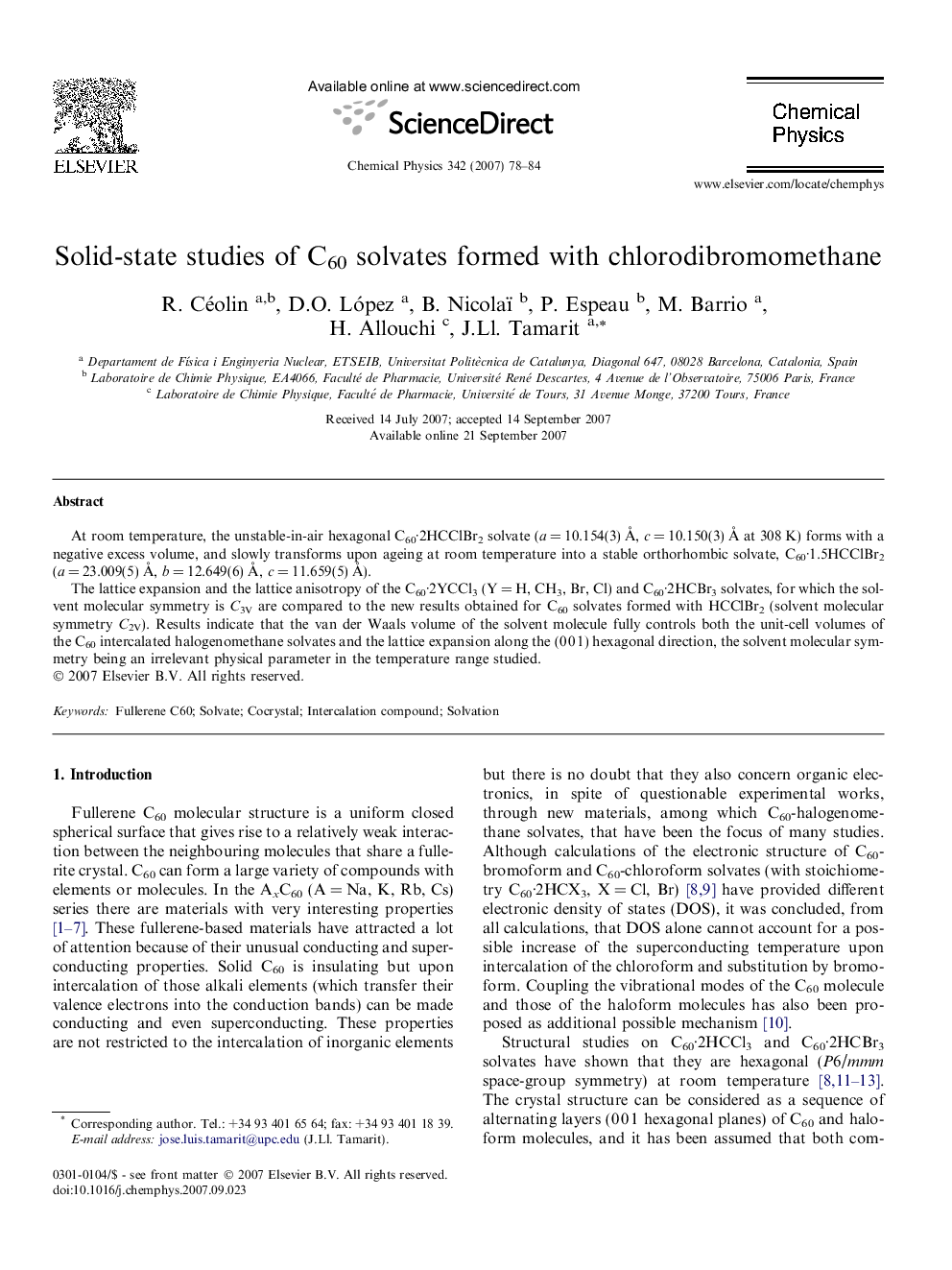| Article ID | Journal | Published Year | Pages | File Type |
|---|---|---|---|---|
| 5376129 | Chemical Physics | 2007 | 7 Pages |
At room temperature, the unstable-in-air hexagonal C60·2HCClBr2 solvate (a = 10.154(3) à , c = 10.150(3) à at 308 K) forms with a negative excess volume, and slowly transforms upon ageing at room temperature into a stable orthorhombic solvate, C60·1.5HCClBr2 (a = 23.009(5) à , b = 12.649(6) à , c = 11.659(5) à ).The lattice expansion and the lattice anisotropy of the C60·2YCCl3 (Y = H, CH3, Br, Cl) and C60·2HCBr3 solvates, for which the solvent molecular symmetry is C3V are compared to the new results obtained for C60 solvates formed with HCClBr2 (solvent molecular symmetry C2V). Results indicate that the van der Waals volume of the solvent molecule fully controls both the unit-cell volumes of the C60 intercalated halogenomethane solvates and the lattice expansion along the (0 0 1) hexagonal direction, the solvent molecular symmetry being an irrelevant physical parameter in the temperature range studied.
